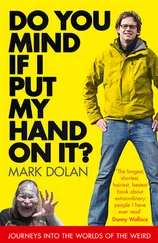Robert Monroe - Journeys out of the body, Practical Guidebook
Здесь есть возможность читать онлайн «Robert Monroe - Journeys out of the body, Practical Guidebook» весь текст электронной книги совершенно бесплатно (целиком полную версию без сокращений). В некоторых случаях можно слушать аудио, скачать через торрент в формате fb2 и присутствует краткое содержание. Жанр: Старинная литература, на английском языке. Описание произведения, (предисловие) а так же отзывы посетителей доступны на портале библиотеки ЛибКат.
- Название:Journeys out of the body, Practical Guidebook
- Автор:
- Жанр:
- Год:неизвестен
- ISBN:нет данных
- Рейтинг книги:5 / 5. Голосов: 1
-
Избранное:Добавить в избранное
- Отзывы:
-
Ваша оценка:
- 100
- 1
- 2
- 3
- 4
- 5
Journeys out of the body, Practical Guidebook: краткое содержание, описание и аннотация
Предлагаем к чтению аннотацию, описание, краткое содержание или предисловие (зависит от того, что написал сам автор книги «Journeys out of the body, Practical Guidebook»). Если вы не нашли необходимую информацию о книге — напишите в комментариях, мы постараемся отыскать её.
Journeys out of the body, Practical Guidebook — читать онлайн бесплатно полную книгу (весь текст) целиком
Ниже представлен текст книги, разбитый по страницам. Система сохранения места последней прочитанной страницы, позволяет с удобством читать онлайн бесплатно книгу «Journeys out of the body, Practical Guidebook», без необходимости каждый раз заново искать на чём Вы остановились. Поставьте закладку, и сможете в любой момент перейти на страницу, на которой закончили чтение.
Интервал:
Закладка:
• Using cueing technologies without affirming a personal intention of appropriate reaction to the signals: this is crucial to cue effectiveness.
• Working in pairs during the first hours of nighttime sleep, even though REM sleep occurs infrequently, and then for only short periods of time.
• While working in pairs, the helper giving an active practitioner too strong a signal. Signals should be kept discreet to prevent waking the sleeper.
• Employing an amateur hypnotist to increase the frequency of dream consciousness.
• The use of hypnotic suggestion to a practitioner who is not susceptible to hypnosis.
• Using physiological signals on a daily basis, causing physical discomfort versus getting enjoyment out of the practice.
• The belief chemical substances promote dissociative experiences.
Acting on this belief is equivalent to drug abuse.
Exercises for Chapter 5
Questions
1. Are techniques based on breathing be considered non-autonomous methods of entering the phase?
2. Which non-autonomous and non-chemical means allow phase entrance after the first attempts?
3. Why is it still not possible to create a device that causes phase entry?
4. Are cueing technologies beneficial to overcoming difficulties with conscious awakening?
5. What happens if a practitioner uses cueing technologies for seven days in a row?
6. Can cueing technologies make use of light signals?
7. Can feasting on peanuts before sleep help the process of phase entry?
8. Will putting a tight rubber band around an ankle promote phase entry?
9. While working in a pair, are both practitioners required to enter the phase?
10. Can the helper be compared to a cueing device while working in a pair?
11. When should the helper give the signal that the active practitioner is dreaming?
12. Would a hypnotist making suggestions about entering the phase be helpful to every practitioner?
13. Why do phase-inducing technologies sometimes work, even though these are based on flawed theories?
14. What is absent in a phase induced by chemical substances?
Tasks
1. Try using a cueing device several times in conjunction with the deferred method. Create a short sound file and set it to a device that plays the file between 15-minute intervals of silence.
2. Before going to sleep at night, try the raised forearm method of entering the phase several times. Attempt this using the deferred method.
3. If you have the opportunity, try to achieve entry into the phase by working in pairs.
Part II
Managing the Out-of-Body Experience
Chapter 6 - Deepening
THE CONCEPT OF DEEPENING
Deepening refers to techniques that induce realistic perception and awareness in the phase state.
The phase is not an exact, fixed state where a practitioner is present or not. It is a realm of states characterized by a transition from the usual perception of the physical body to a complete alienation from it, while maintaining consciousness and reality of perception, albeit in a different frame of space. The transition begins with perception of the natural, physical body followed by a moment of ambiguity where a clear experience of body is intermingled with a sense of the perceived body. Afterward, the perceived body enters the phase space, while the physical body becomes a memory. At this point, the perceived senses may be quite dull; for example, vision may be blurred or completely absent. Deepening techniques solve the problem of diminished or absent sensory perception in the phase.
Sensory experiences within a fully realized phase experience are as realistic as those in everyday reality. In almost one-half of all cases, practitioners observe that reality-based surroundings pale in comparison to vibrant detail and color of the phase space. To this end, after entering the phase, a practitioner must perform deepening techniques to enhance and solidify the degree and quality of phase reality.
Full spatial perception in the phase only occurs after deepening techniques have been applied. There would be no point to remaining in the phase without deepening. For example, what is the point in finding a person in phase, if it is not even possible to discern his or her eyes there?
In a considerable number of cases, deepening is not necessary, since the phase experience is completely realistic, if not hyperrealistic. In cases like these, deepening may be bypassed.
Deepening is also related to the length of time a practitioner may remain in the phase. If an action is taken without a deep, realistic phase, the experience will always be several times shorter in duration than a phase where deepening techniques had been applied. The properties of the phase space very much depend on its depth. When surroundings are blurry and unclear, the stability of objects is very weak.
There is a direct correlation between the realism of a phase and a practitioner’s level of awareness, so it is extremely important to ensure a deep phase in order to promote maximum awareness.
Interesting Fact!
The realism of a deep phase space is often so great that it causes uncontrollable fear or shock.
Deepening should only be performed following complete separation from the body. If initiated before separation, the phase may end prematurely. If complete separation does not occur, primary deepening should be used. As regards the deepening techniques themselves, there is one main one and there are several subsidiary ones. The main technique, which does not present any difficulties, is sufficient for having a successful practice.
Interesting Fact!
Ignorance of deepening techniques has led to a great number of baseless theories and superstitions.
Some practices treat differing phase depths as various states and even worlds. In reality, there are simple actions that ensure a singular phase experience.
PRIMARY DEEPENING TECHNIQUES
The goal of primary deepening is to achieve complete separation from the body, allowing further actions within the phase. Primary deepening entails achieving two principal objectives: complete separation from the physical body and anchoring the perceived body within the phase space.
When separation from the body occurs through the use of a separation technique, a posture must be assumed that completely different from the posture of the real, physical body. The greater the degree of postural similarity between the physical and perceived bodies, the more shallow and brief the phase will be. For example, in the case of horizontal levitation, a 180° turn must immediately performed, arms and legs spread, adopting a vertical posture. Under no circumstances should a practitioner in the phase remain in a posture identical to that of the physical body.
If a practitioner is pulled back toward the body after separation, anchoring should be initiated that facilitates standing or sitting in the phase. Resisting the gravity of the physical body is paramount to remaining in the phase. The result of willful resistance is directly proportional to the degree of applied effort. It will help to grab hold of surrounding objects and hold on to them; any means of anchoring the perceived body within the phase are appropriate. It is possible to start rotating around an axis; not simply imagining the rotation, but performing it with the perceived body as well.
DEEPENING THROUGH SENSORY AMPLIFICATION
The more a phase is experienced by the sensory faculties, the deeper and longer the phase will be. Sensory amplification in the phase is the most effective deepening technique precisely because it allows the activation of primary internal sensations during the transition from reality to the phase. There are several ways to perform sensory amplification.
Читать дальшеИнтервал:
Закладка:
Похожие книги на «Journeys out of the body, Practical Guidebook»
Представляем Вашему вниманию похожие книги на «Journeys out of the body, Practical Guidebook» списком для выбора. Мы отобрали схожую по названию и смыслу литературу в надежде предоставить читателям больше вариантов отыскать новые, интересные, ещё непрочитанные произведения.
Обсуждение, отзывы о книге «Journeys out of the body, Practical Guidebook» и просто собственные мнения читателей. Оставьте ваши комментарии, напишите, что Вы думаете о произведении, его смысле или главных героях. Укажите что конкретно понравилось, а что нет, и почему Вы так считаете.










